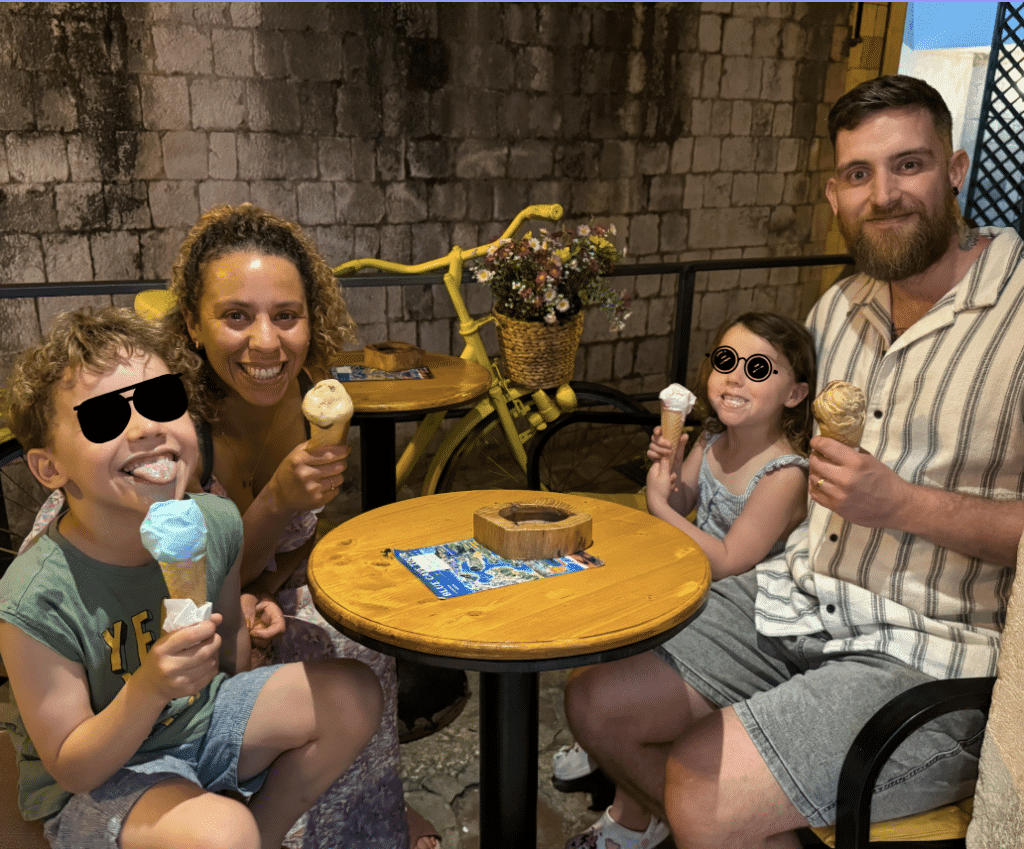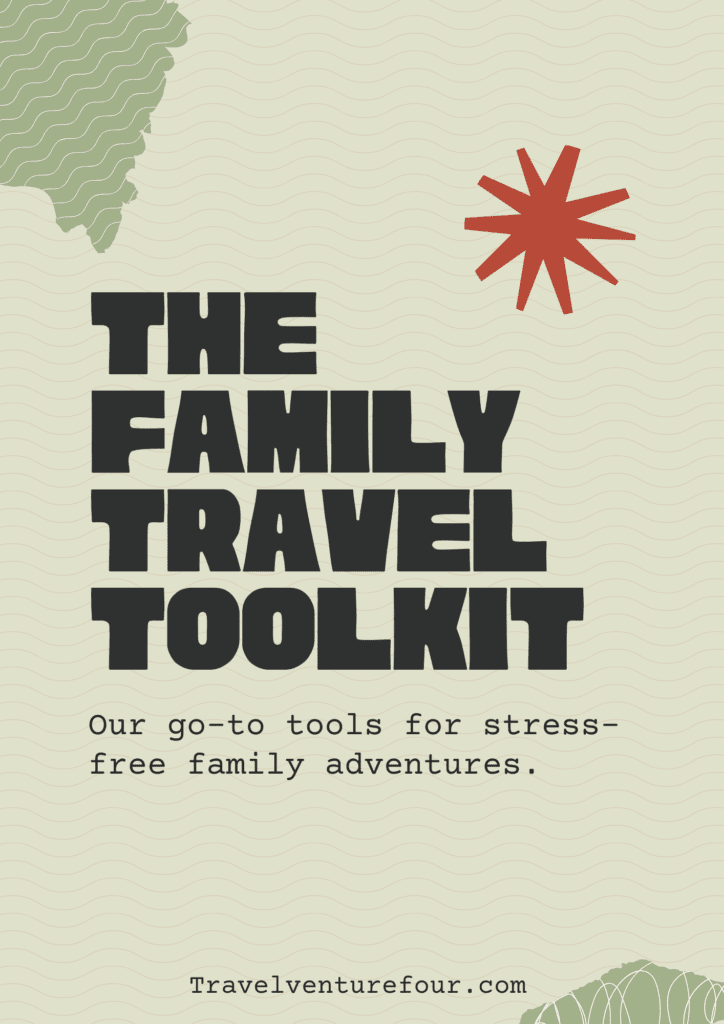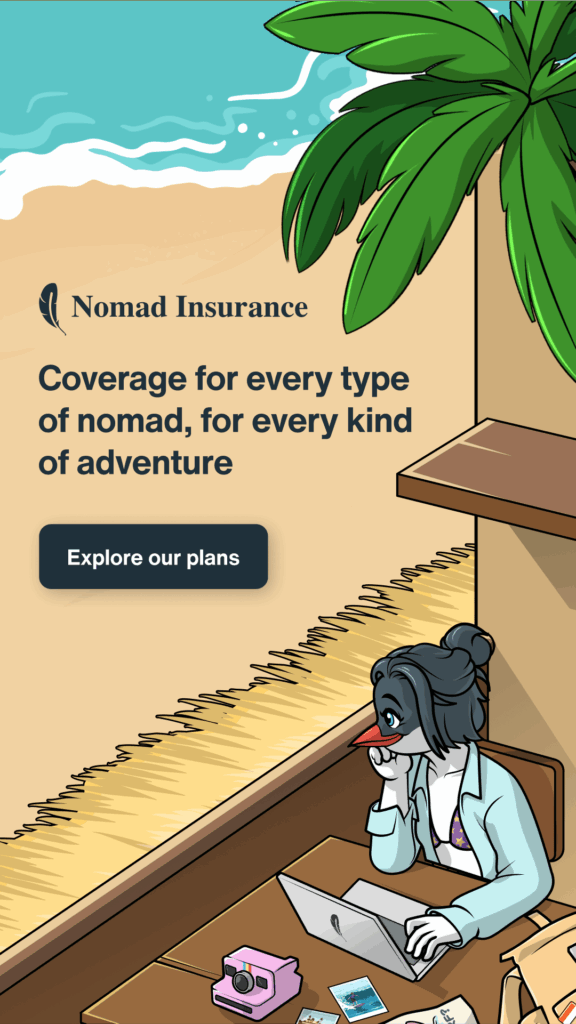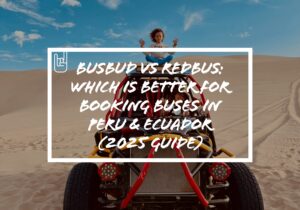Best eSIM for South America (With Kids)
Because hunting for a SIM card at a bus terminal with tired kids In Latin America isn’t the travel adventure anyone signed up for.
We learned the hard way that internet access in South America is part luck, part strategy. Between long border crossings, overnight buses, and cafés that promise Wi-Fi but deliver Morse code speeds, a reliable connection quickly stops being a luxury, it’s survival.
That’s where eSIMs changed everything. No more queues in phone shops, no guessing which carrier works where, no juggling plastic cards that vanish in backpacks. Just scan, activate, and get back to exploring.
After trying Airalo, Holafly, Yesim, and Saily across Peru, Ecuador, and Bolivia, here’s the honest breakdown, which eSIMs actually worked for family travel, what each one costs, and how to avoid the small print that catches you mid-road trip.
Niw yes you can buy local Esim networks like Tuenti In peru for exampel, its cheaper but you need to go in person, try to explain in Spanglish, then have proof of identity (Sometimes they expect you to be a resident) Then you have n extra mobile number profile for that country.
For a quick guide, here is a rundown of the eSIMS to buy
➡️ Buy Airola eSIM → default pick for most families
➡️ Buy Yesim eSIM → short city breaks, easy top-ups, simple app.
➡️ Buy Saily eSIM → steady data on a budget.
What’s an eSIM (and Why Families Love Them)

An eSIM is basically a digital SIM card built right into your phone. Instead of swapping tiny bits of plastic at every border, you download a data plan online, scan a QR code, and boom, you’re connected. No waiting, no shops, no lost cards in the bottom of your daypack.
For families, it’s a small tech shift that makes a huge difference. Here’s why:
One less errand on arrival. After a long flight, the last thing you want is to track down a local SIM kiosk while your kids melt into airport chairs.
You can buy before you land. Install your plan at home, turn it on when you touch down.
Everyone stays online. You can hotspot your kids’ devices or get individual plans for peace of mind.
No language barrier stress. No contracts or translation fails with local vendors.
Perfect for border-hopping. eSIMs switch seamlessly across countries, ideal for multi-country South America routes.
We’ve used Local SIMs, too, and they’re still fine if you’re staying put for months. But for moving families, eSIMs for multiple countries are game changers.
Our Top Picks for South America eSIMs (Airalo, Holafly, Yesim & Saily)
Airalo - Best all-rounder for multi-country travel
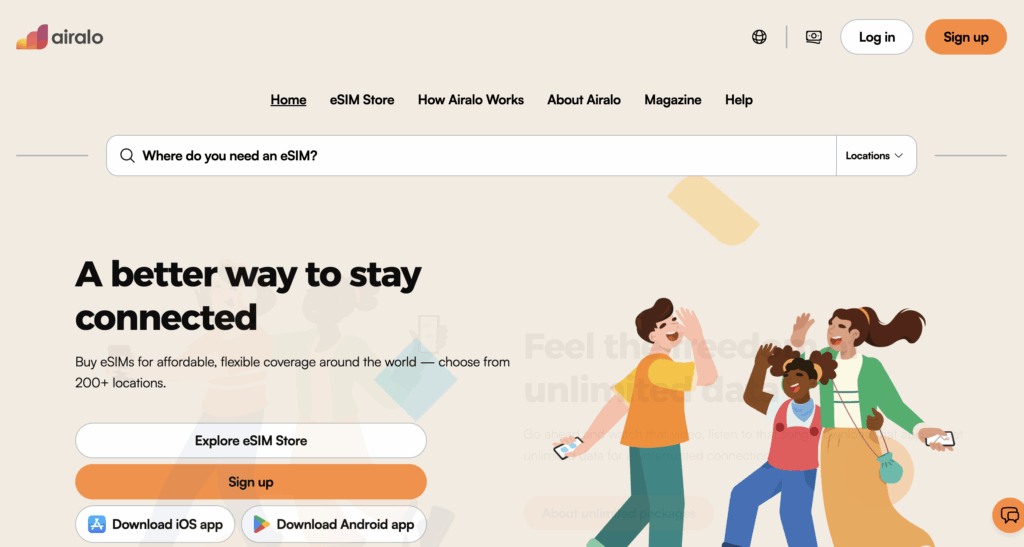
Data: 1–20GB (7–30 days)
Coverage: Excellent; usually rides on Claro/Movistar
Hotspot: ✅ Yes
Price: ~$4.50–$35
Why we like it: Reliable signal, super clear setup, easy to top up, great for border-hopping.
Heads-up: Upload speeds can dip in remote Andean stretches.
Holafly - For unlimited data users & heavy streamers
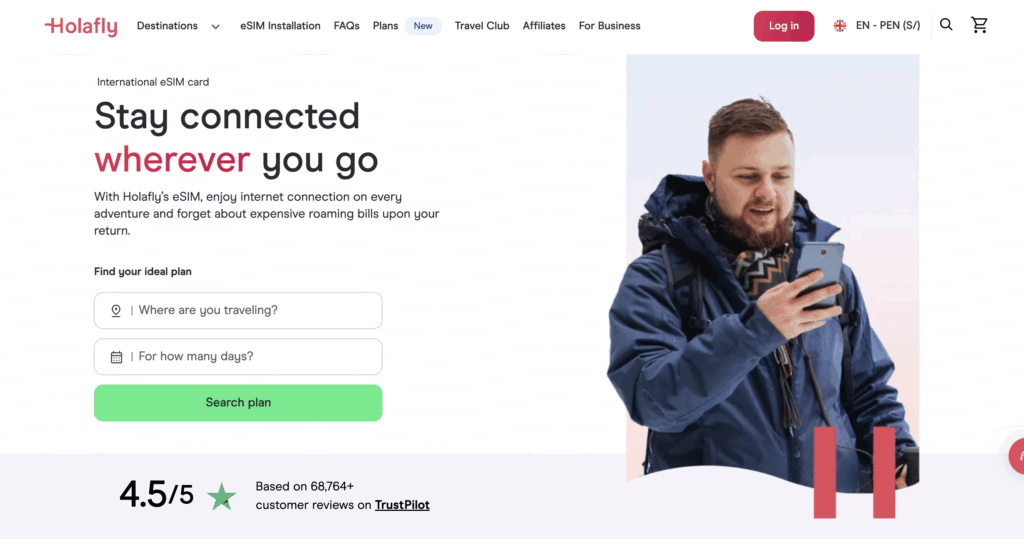
Data: Unlimited (5–90 days)
Coverage: Good overall, varies by region/city
Hotspot: ❌ No (tethering blocked on most plans)
Price: ~$19–$99
Why we like it: Perfect for work weeks, constant maps, or daily video calls.
Heads-up: Speed can throttle after heavy use; no hotspot is a deal-breaker for some.
Yesim - Best for short trips & easy top-ups

Data: 3–20GB
Coverage: Solid in Peru, Chile, Colombia metros
Hotspot: ✅ Yes
Price: ~$8–$40
Why we like it: Fast setup, friendly app, painless top-ups; ideal for city breaks.
Heads-up: Smaller bundles vanish quickly if you stream or hotspot a lot.
Saily - Budget pick for longer stays in one country
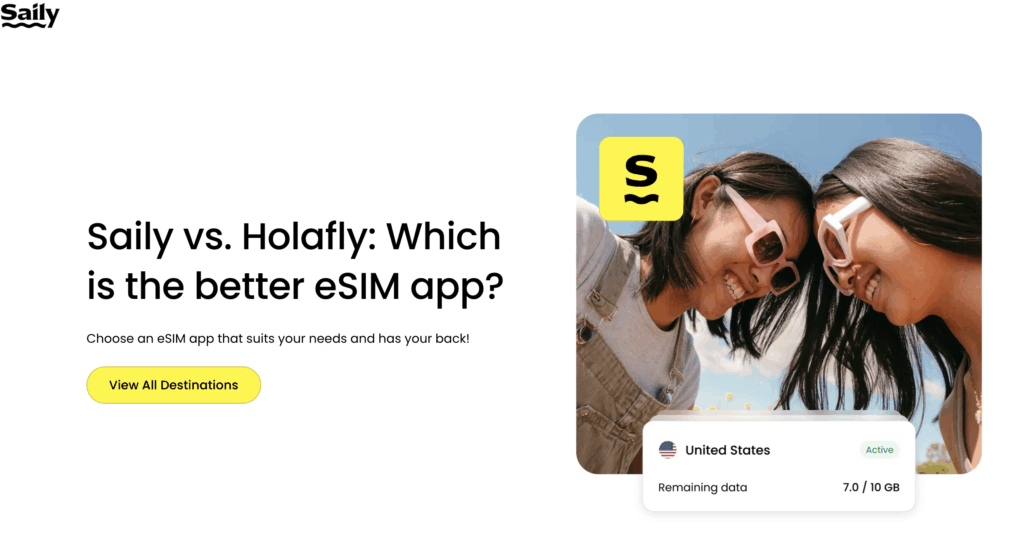
Data: 5–30GB
Coverage: Decent, especially in larger cities
Hotspot: ✅ Yes
Price: ~$5–$30
Why we like it: Simple, affordable plans that just work in the background.
Heads-up: Fewer country options than Airalo/Yesim (check availability before you buy).
💡 Quick Verdict:
Choose Airalo if you’re crossing borders, it’s the most consistent across South America.
Pick Holafly if you’re working online or streaming often (but skip if you need hotspotting).
Yesim suits quick trips or families who just want basic data for maps, messages, and WhatsApp.
Saily is solid for budget travellers or longer stays in one country.
We bought all four through Travelpayouts partners, activation was instant, support decent, and refunds straightforward when plans didn’t activate cleanly.
Quick family hack to save on data, ALWAYS download map data on wifi before exploring then you dont use data using Google maps.
How to Set Up an eSIM (Step-by-Step for Families)

Installing an eSIM sounds techy, but once you’ve done it once, you’ll wonder how you ever survived without it. It’s basically: scan, click, done. Still, with kids and backpacks and airport chaos, it helps to have the steps laid out clearly.
Here’s exactly how we set ours up on iPhones and Androids while travelling:
Step-by-Step Setup
1. Buy your plan online.
Choose your provider (Airalo, Holafly, Yesim, or Saily) and pick a regional or country-specific plan.
Pro tip: for multi-country trips, Airalo’s “Latin America” regional plan usually works best.
2. Get your QR code.
You’ll receive an email or in-app code right after purchase. Keep Wi-Fi on until setup’s done.
3. Scan the QR code on your device.
On iPhone: Settings → Mobile Data → Add eSIM → Use QR Code
On Android: Settings → Connections → SIM Manager → Add eSIM → Scan QR Code
4. Label your new line.
We name ours things like “Peru Data” or “Airalo Latin” — makes switching simple.
5. Activate when you land.
Most eSIMs start the clock when they first connect to a local network, not when you buy. Perfect for pre-trip setup.
6. Turn off data roaming on your old SIM.
Avoid accidental double charges from your home network.
7. Test with a quick WhatsApp or map search.
If it connects instantly, you’re good to go. If not, toggle airplane mode or restart the phone once.
💡 Family Tip:
If you’re travelling with multiple devices, activate one eSIM first, then hotspot others. It saves money and avoids tech meltdowns mid-trip.
Which eSIM Works Best in Each Country (Our Real Results)

South America isn’t one network; it’s a patchwork. What flies in Lima might crawl in the Andes. Here’s what actually worked for us plus other travelling families we met on buses and in cafés.
🇵🇪 Peru
Pick: Airalo (regional or Peru plan) → most consistent across Movistar/Claro.
Alt: Yesim for short city stays (Lima/Arequipa).
Notes: Cusco–Puno and Nazca desert can dip. Toggle airplane mode or lock to 3G/4G if 5G hunts and kills your battery. Hotspot worked fine.
🇪🇨 Ecuador
Pick: Airalo again for coast + highlands reliability.
Alt: Saily if you just need maps/WhatsApp on budget.
Notes: Mountain corridors (Quito ↔ Cuenca) have dead zones. Download offline maps before bus days.
🇨🇱 Chile
Pick: Yesim or Airalo (both latched to Entel/Movistar well).
Alt: Holafly if you work online and want “unlimited”—great in cities, but expect throttling after heavy use.
Notes: Long coastal drives had steady 4G; Patagonia gets patchy (no miracle eSIM down there).
🇦🇷 Argentina
Pick: Airalo for simple, steady data in Buenos Aires/Mendoza routes.
Alt: Saily if you’re staying put a few weeks (cheap top-ups).
Notes: Speeds fine in cities; rural stretches drop to 3G—good enough for maps and messages.
🇨🇴 Colombia
Pick: Yesim impressed in Bogotá/Medellín; Airalo a close second.
Alt: Holafly if you need to stream or upload lots (remember: no hotspot).
Notes: Coffee Triangle roads = pockets of nothing. Queue downloads before you go.
🇧🇴 Bolivia
Pick: Airalo (best of the bunch, still variable).
Notes: Expect honest gaps between La Paz ↔ Uyuni. Offline maps + bus-day playlists are your friend.
APN gotcha: if data won’t start, check the app’s APN instructions (each provider lists it). Manually entering APN then rebooting solves 90% of “it won’t connect” panics.
Battery sanity: set the eSIM as data only, keep your home SIM on calls/texts (or off). And switch off 5G in rural areas, 4G holds better and drinks less battery.
Common Problems (and Quick Fixes)

Even the best eSIMs have their moments. South America’s networks can be brilliant one hour and prehistoric the next. Here’s what tends to go wrong, and how to fix it fast (without losing your cool at 2 a.m. in a bus terminal).
“No Service” After Installation
➡️ Fix: Restart your phone and toggle Airplane Mode on/off.
If that fails, open your eSIM provider app and check if the plan shows “active.” Sometimes it takes a minute to register on the local carrier.
Data Works, but Nothing Loads
➡️ Fix: Go to Settings → Mobile Networks → Access Point Names (APN) and manually enter the one your provider lists (Airalo, Yesim, Saily, or Holafly). This alone fixes 80% of connectivity issues.
Battery Draining Fast
➡️ Fix: Disable 5G and switch to 4G/LTE. South American 5G coverage is spotty, your phone keeps hunting for a signal it won’t find.
Accidental Roaming Charges
➡️ Fix: Turn off mobile data for your home SIM. Make sure “data roaming” is disabled there. Keep only your eSIM active for data.
Signal Drops During Travel
➡️ Fix: It’s normal. Some stretches (especially between highlands and coast) have no service at all. Download offline maps, audiobooks, and shows before you go.
Can’t Receive Verification Texts or OTP Codes
➡️ Fix: eSIMs are data-only, so SMS won’t work. Keep your home SIM on “texts only” for those moments.
💡 Tip for Families:
We assign one parent’s phone as the “router” one eSIM with hotspot on. Kids connect to that Wi-Fi network, and everyone stays online without juggling four plans.
Final Thoughts: Which eSIM Wins for Family Travel?
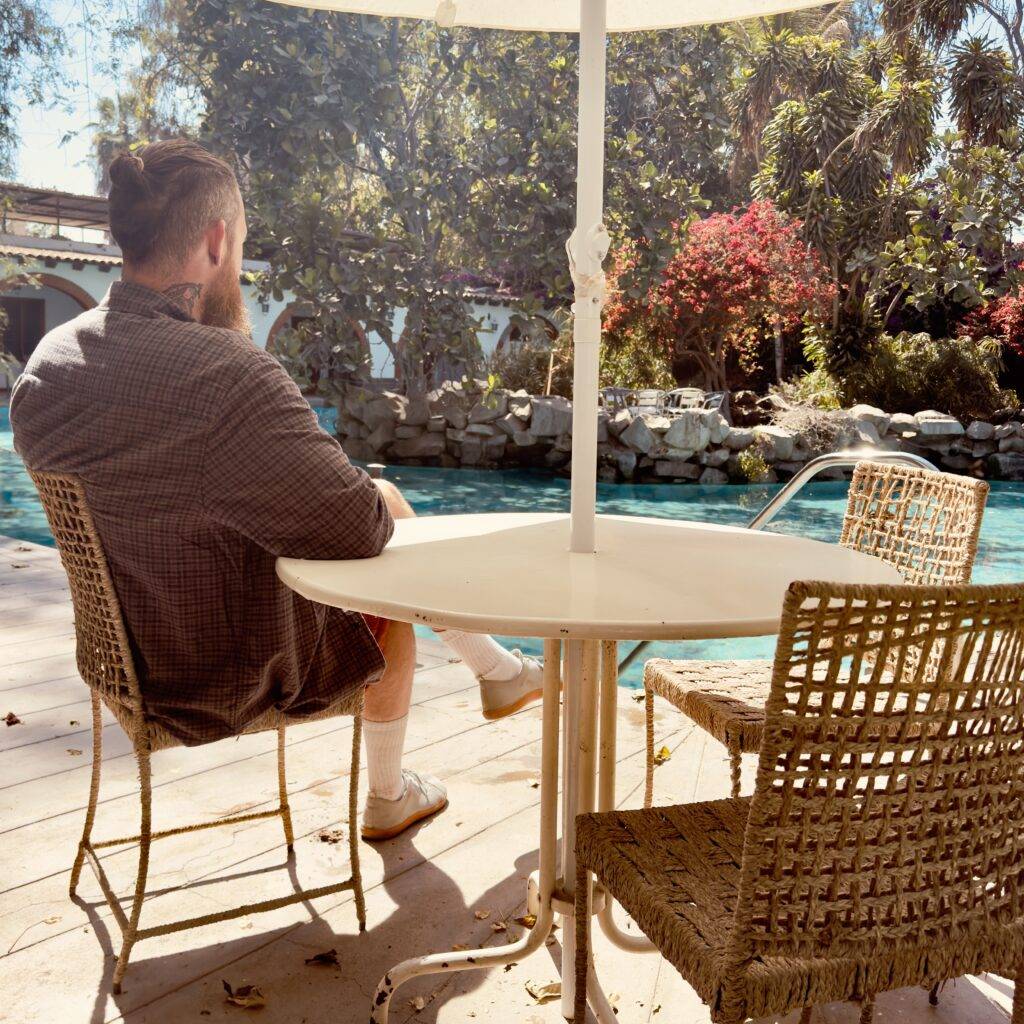
If we had to pick one for a multi-country South America trip with kids, we’d grab Airalo and not think twice. It’s the steadiest across borders, plays nicely with hotspotting, and the setup is painless.
Go Airalo → default pick for most families (best all-rounder, multi-country).
Choose Holafly → if you need “unlimited” for heavy work/streaming (remember: no hotspot).
Pick Yesim → short city breaks, easy top-ups, simple app.
Use Saily → budget choice for longer stays in one country.
Our real-life flow looks like this: install Airalo regional before take-off, keep home SIM for texts/OTP, and let one parent hotspot the kids’ devices. If work ramps up, we add a Holafly unlimited for a week, then drop back to Airalo/Yesim.
Bottom line: eSIMs remove a whole category of travel hassle. No kiosks, no contracts, no missing micro-SIMs in the bottom of your backpack—just scan, connect, and get on with your day.
Ready to set up?
Get Airalo → regional Latin America plans (family default).
Try Holafly → unlimited data when you need it.
Check Yesim → quick trips + clean app.
Save with Saily → steady data on a budget.
(Using our partner links helps support our site at no extra cost to you, thank you!)



